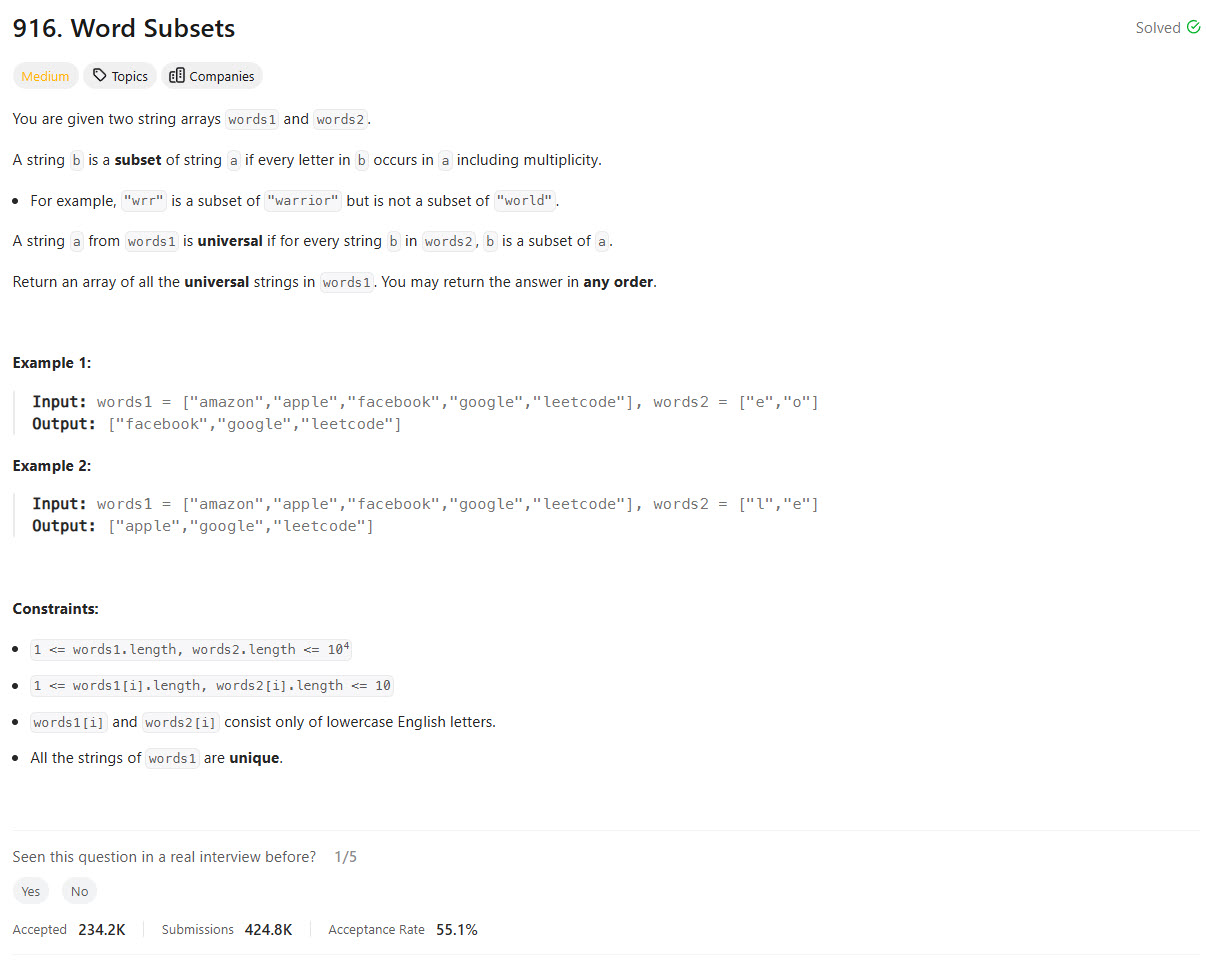Problem Statement

Brute Force [TLE]
class Solution:
def wordSubsets(self, words1: List[str], words2: List[str]) -> List[str]:
res = []
counter_arr = []
for i, word in enumerate(words1):
counter_arr.append([i, Counter(word)])
for i, counter in counter_arr:
for word in words2:
w2_counter = Counter(word)
isSubset = True
for c, count in w2_counter.items():
if c not in counter or count > counter[c]:
isSubset = False
break
if not isSubset:
break
else:
res.append(words1[i])
return res
Improve Solution
class Solution:
def wordSubsets(self, words1: List[str], words2: List[str]) -> List[str]:
max_freq = Counter()
# Step 1: Calculate the maximum character requirements across all words in words2
for word in words2:
word_counter = Counter(word)
for char, freq in word_counter.items():
max_freq[char] = max(max_freq[char], freq)
# Step 2: Check each word in words1 if it satisfies the max_freq requirements
res = []
for word in words1:
word_counter = Counter(word)
# Check if the word meets the max frequency requirement
if all(word_counter[char] >= freq for char, freq in max_freq.items()):
res.append(word)
return res
Editorial
Approach 1: Reduce to Single Word in B
class Solution(object):
def wordSubsets(self, A, B):
def count(word):
ans = [0] * 26
for letter in word:
ans[ord(letter) - ord('a')] += 1
return ans
bmax = [0] * 26
for b in B:
for i, c in enumerate(count(b)):
bmax[i] = max(bmax[i], c)
ans = []
for a in A:
if all(x >= y for x, y in zip(count(a), bmax)):
ans.append(a)
return ans
